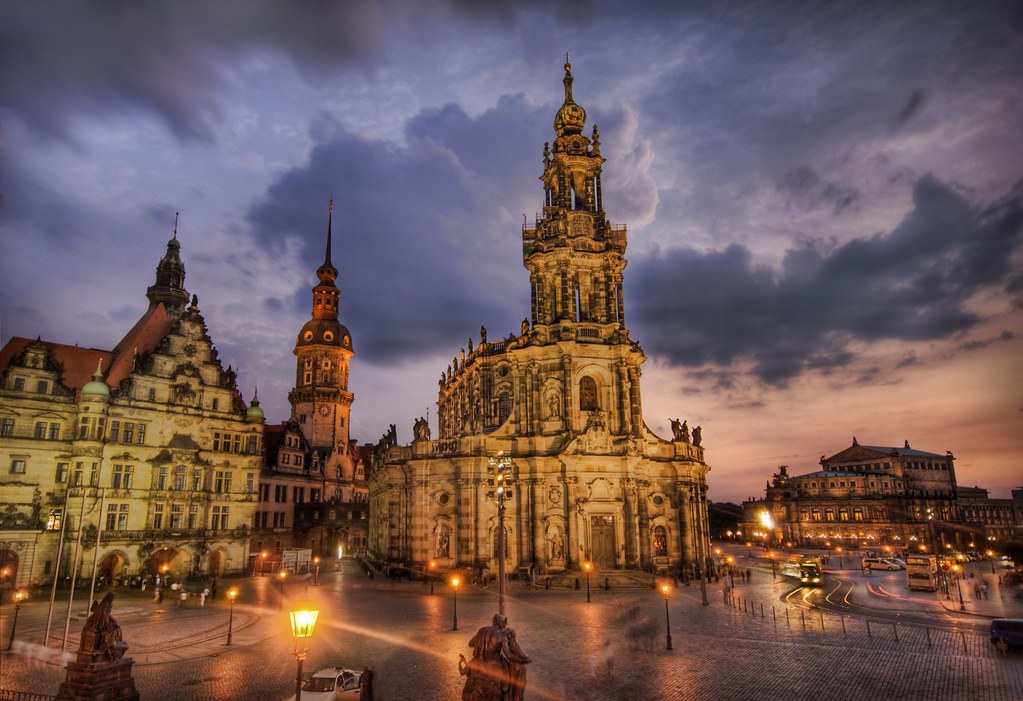Americans in Dresden: Top 10 Highlights

Americans in Dresden: Top 10 Highlights
I was doing research for something I was working on when I came across some intriguing articles about how Dresden, Germany was, at one time, both a home to a sizable American expat community and a European destination for American travelers. I was unaware of this, and it piqued my curiosity. So, I deviated from my original research and took a detour down a new path. On this detour, I learned about an interesting part of history, of which I was not previously aware. (Personal note: this unexpected type of “exploration” is always my favorite. I sometimes feel that I learn more by exploring unexpected paths than I do when I stay on the main path, so to say.)
I’ll share my Top 10 highlights (in no particular order):
- For about a century, 1816-1917, Dresden was both a popular destination and home for Americans. It was even mentioned in articles alongside the cities of Paris, Berlin, Munich, Naples, and Rome.
- In 1892, the American Consul General in Dresden said that Dresden had the largest American enclave outside of Paris on the European continent. It had about 1.000 permanent American residents. Dresden also attracted around 30,000 American visitors annually.
- During this time, Dresden had a reputation for being an open and welcoming city that was also home to educated elites. American elites even chose Dresden as place to have their children educated.
- Dresden was considered a place of art and culture in German-speaking Europe with prized museums, galleries, libraries, theater houses and other cultural attractions.
- Washington Irving, author of Rip Van Winkle and The Legend of Sleepy Hollow, spent the winter of 1822-23 in Dresden, where he even met King Frederick Augustus I of Saxony.
- A young Theodore Roosevelt spent the summer of 1873 in Dresden with members of his family. Theodore’s father sent his children, including Theodore, to Dresden to learn the German language and culture.
- Theodore Roosevelt learned German and did well, especially in reading and writing.
Bonus Fact: he also learned taxidermy there. Did you know that he also had asthma?
Bonus Fact: Five U.S. presidents spoke German, including: John Quincy Adams, Theodore and Franklin D. Roosevelt, Woodrow Wilson, and Bill Clinton. Other presidents also had varying degrees of knowledge of German.
- Mark Twain, American author, spent time in Dresden during the fall and winter of 1891-92, while his daughters were studying music there.
- Newell Sill Jenkins, influential dentist, practiced in Dresden from 1866-1909. With his development and improvement of “Jenkins porcelain enamel”, he is considered the father of aesthetic dentistry. Jenkins also developed a toothpaste by the name of “Kolynos.
Bonus Fact: Mark Twain bought the manufacturing and distribution rights for Jenkins enamel for the US market.
Bonus Fact: Jenkins was friends with Richard Wagner and actually convinced Wagner to stay in Germany and NOT emigrate to the US after the financial disaster of “The Rind of the Nibelung” in Bayreuth, Germany in 1867.
- Dresden was one of only two German cities with an English-language paper and by 1890, Franklin College in Dresden was one of four European institutions where American University Board examinations were held.
There you have it; the top 10 highlights from my unexpected journey down the path about Americans in Dresden. I hope you learned something new!
If you have more to add to the list, please share in the comments below! Or, if you explored an unexpected path and got excited by learning something new, please share what you learned!
Mach’s gut!
P.S. You can read more about this topic by simply searching “(Famous) Americans in Dresden” and also by checking out these articles:
– English Spoken, American Understood: A Century of Americans in Dresden by Robert A. Selig – Elite Migration to Germany: The Anglo-American Colony in Dresden before World War I by Nadine Zimmerli